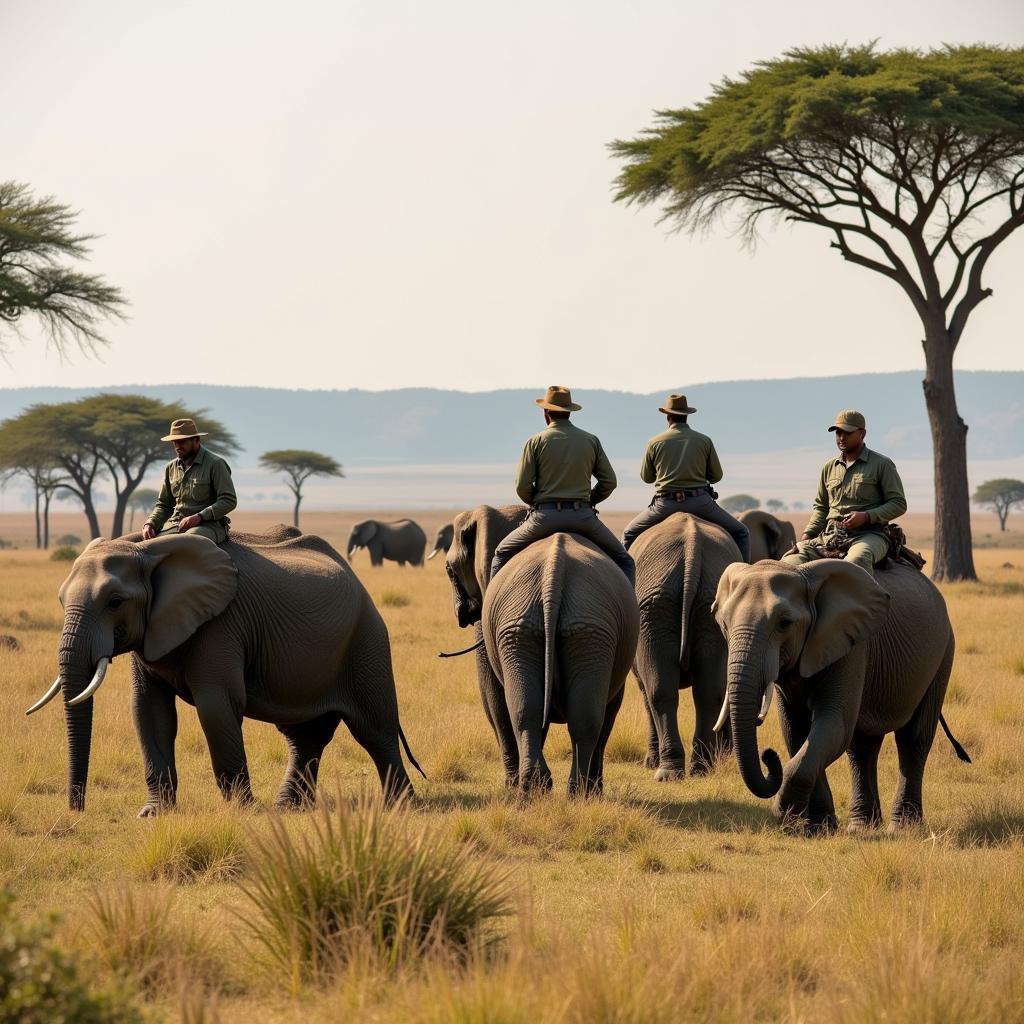African Elephant IUCN Status: A Deep Dive
The African Elephant Iucn status is a critical indicator of the species’ survival. This article explores the complexities surrounding the conservation of these majestic creatures, delving into the factors that threaten their existence and the ongoing efforts to protect them. african elephant iucn status
Understanding the African Elephant and its IUCN Status
The International Union for Conservation of Nature (IUCN) Red List assesses the extinction risk of species worldwide. The African elephant, previously classified as a single species, is now recognized as two distinct species: the African savanna elephant ( Loxodonta africana ) and the African forest elephant ( Loxodonta cyclotis ). This distinction has significantly impacted their respective IUCN statuses.
The African Savanna Elephant: Endangered
The African savanna elephant, the larger of the two species, is currently listed as Endangered. This signifies a high risk of extinction in the wild. Poaching for ivory remains a significant threat, driving down populations in several regions. Habitat loss due to expanding human settlements and agricultural activities further exacerbates the problem.
The African Forest Elephant: Critically Endangered
The African forest elephant, smaller and adapted to dense forest environments, faces an even more dire situation. It is listed as Critically Endangered, indicating an extremely high risk of extinction. Similar to the savanna elephant, poaching and habitat loss pose major threats. However, the forest elephant’s smaller population size and slower reproductive rate make it even more susceptible to these pressures.
 African Forest Elephant: Facing a Critical Threat of Extinction
African Forest Elephant: Facing a Critical Threat of Extinction
What Does the IUCN Status Mean for Conservation Efforts?
The IUCN status serves as a call to action for conservationists and policymakers. It highlights the urgency of implementing effective strategies to protect these iconic animals. The different classifications for the two species underscore the need for tailored approaches to address their specific challenges. african elephant iucn status 2017
How is the IUCN Status Determined?
The IUCN employs a rigorous assessment process, considering various factors like population size, trends, geographic range, and threats. Expert analysis and data collection play crucial roles in determining the appropriate status for each species. african elephants iucn
“The IUCN Red List is not just a list of names; it’s a powerful tool for prioritizing conservation efforts,” states Dr. Amani Jabari, a renowned wildlife conservationist. “The data it provides helps us understand which species are most at risk and where our interventions are needed most.”
Challenges and Opportunities in Elephant Conservation
Conserving African elephants presents numerous challenges. Combating poaching requires international cooperation and strong law enforcement. Addressing habitat loss necessitates sustainable land management practices and engaging local communities.
“Protecting elephants requires a multi-pronged approach,” explains Dr. Jabari. “We need to tackle both the illegal wildlife trade and the underlying drivers of habitat destruction.”
Hope for the Future
Despite the challenges, there are reasons for optimism. Increased awareness, community-based conservation initiatives, and anti-poaching efforts are showing positive results in some areas. african bush elephant iucn]
 Conservation Efforts for African Elephants are Crucial for their Survival
Conservation Efforts for African Elephants are Crucial for their Survival
Conclusion
The African elephant IUCN status paints a complex picture of the species’ survival. While the threats are significant, ongoing conservation efforts offer hope. By understanding the challenges and working together, we can ensure a future where these magnificent creatures continue to roam the African landscape. The African elephant IUCN status reminds us of the crucial role we play in their survival. african elephanats iucn]
FAQ
- What is the IUCN Red List?
- How many species of African elephants are there?
- What are the main threats to African elephants?
- What does “Critically Endangered” mean?
- How can I help protect African elephants?
- What is the difference between the African savanna and forest elephant?
- Are there successful conservation stories for African elephants?
Need help? Contact us at +255768904061, kaka.mag@gmail.com or visit us at Mbarali DC Mawindi, Kangaga, Tanzania. Our customer service team is available 24/7.

